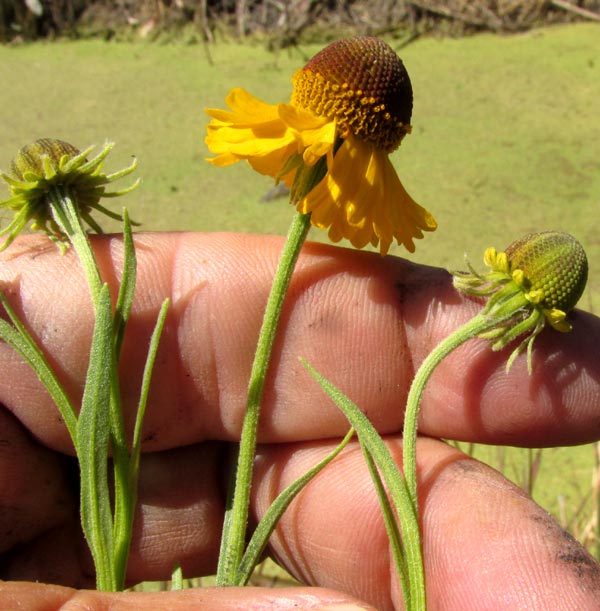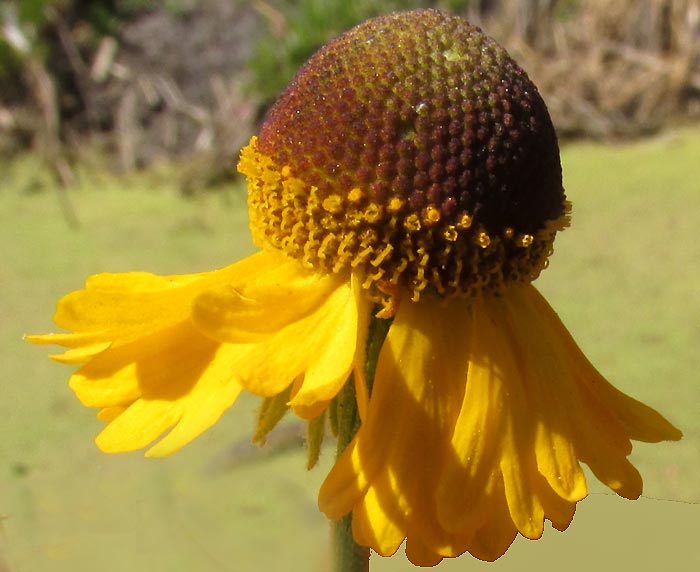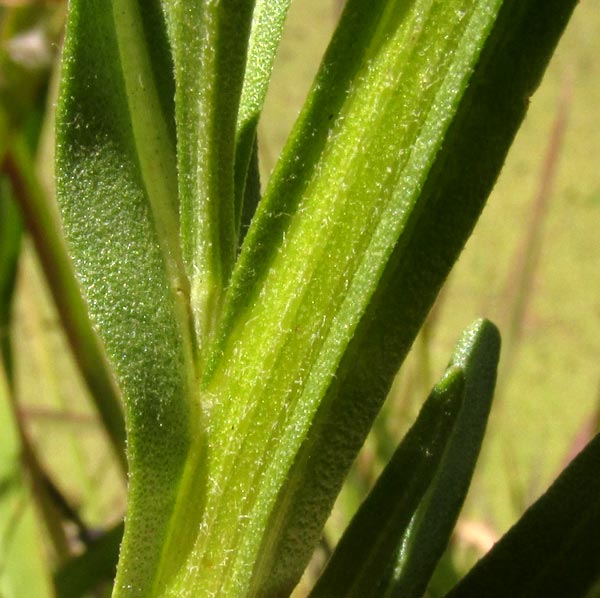Excerpts from Jim Conrad's
Naturalist Newsletter
entry dated March 31, 2022, issued from near Tequisquiapan, elevation about 1,900m (6200 ft), ~N20.57°, ~ W99.89°, Querétaro state, MÉXICO
"MEXICAN SNEEZEWEED" FLOWERING

Along the weedy slopes of a house-sized pond that hasn't yet gone dry here during the drier part of the late dry season, the above blossoms stood atop a weed composed of a few slender stems bearing a few narrow leaves. Anyone familiar with the most common weeds and wildflowers in English speaking North America will recognize this as one of numerous species of sneezeweed, genus Helenium, of the vast Composite or Aster Family. Here's a closer look at the flowering head:

The domed "hemispheric" receptacle densely invested with tiny, brownish disc florets issuing yellow style branches is typical of sneezeweeds, as are the large, yellow ray flowers, which often are three-lobed at their points just like this one's. The stem is typical of certain common sneezeweed species, too, shown below:

The squarish stem with its sharp edges and the manner by which the alternating leaf bases merge with and continue on down the stem as "wings" are all sneezeweedy features.
In North America about 18 Helenium species are recognized, but in our Bajío region of arid, upland central Mexico only three are listed, and of those only one looks like ours, and that's HELENIUM MEXICANUM.
The name "Mexican Sneezeweed" deserves quotation marks because I've not seen that name used in any literature or on any web page, applied to our Helenium mexicanum. The species' distribution is from about here in central Mexico south in arid uplands to Costa Rica, bypassing English speakers in Belize. However, the binomial itself translates to "Mexican Sneezeweed", species of the genus Helenium generally known as sneezeweeds, and mexicanum saying it's the Mexican one. In Spanish, among its names are: Cabezona, or "Big-Head"; Hierba de la Víbora, or "Snakegrass"; Manzanilla Montés, or "Mountain Chamomile" and Rosilla, or "Little Rose."
The name sneezeweed appears to have come about from the former use of dried leaves of some of the species in making snuff, which was inhaled to cause sneezing, the sneezing supposed to rid the body of evil spirits. Toxic chemicals could have been the cause of the sneezing. Mexican Sneezeweed has been used as an insecticide to kill lice on livestock. A 2011 study by Blanca Estela Barrera-Figueroa and others entitled Antibacterial activity of flower extracts from Helenium mexicanum H.B.K. confirmed the antimicrobial activity of various extracts of Helenium mexicanum, both against Gram negative and Gram positive human pathogen bacteria.